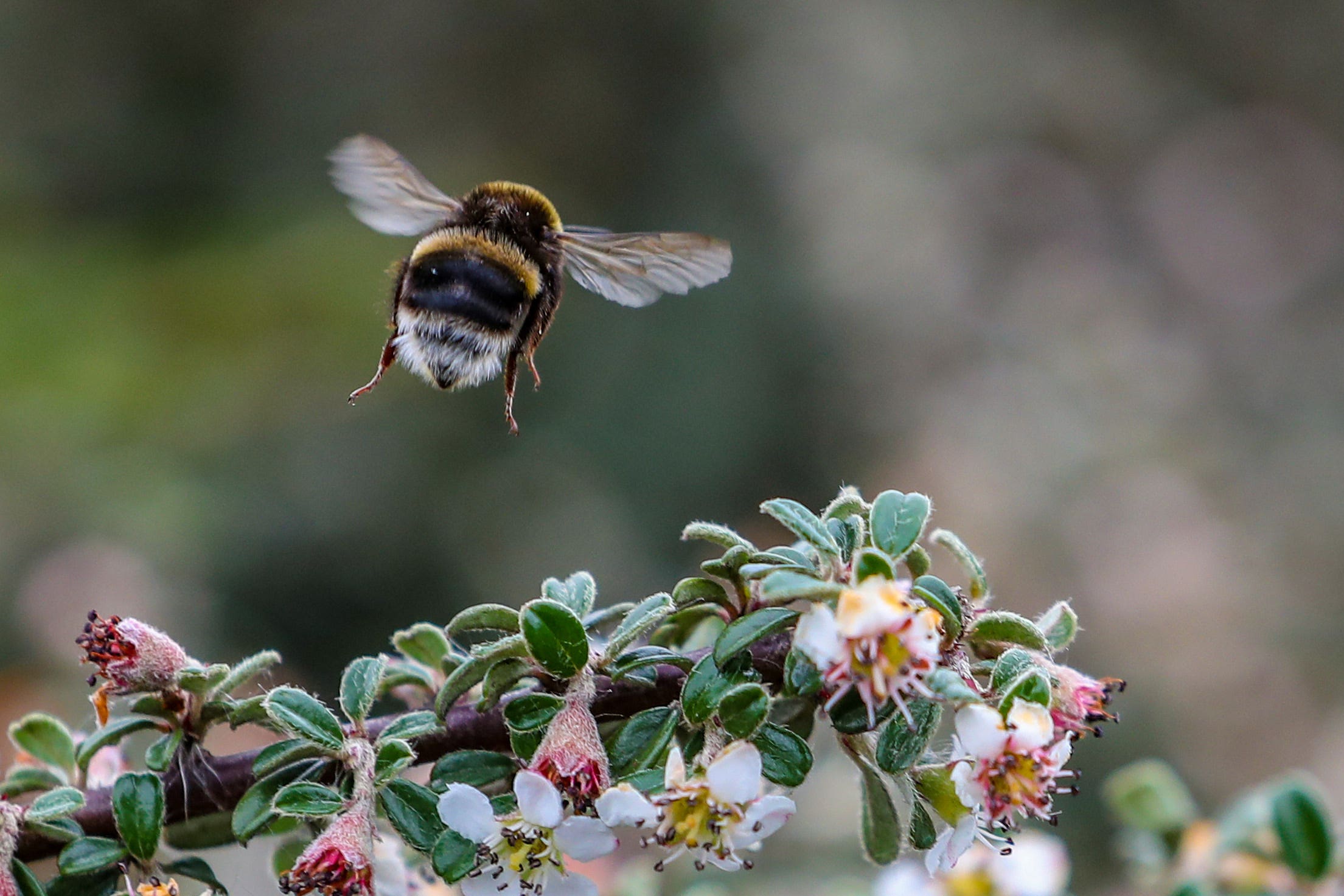Bumblebees less likely to land on flowers sprayed with fertilisers – study
This could have important consequences for pollination, with negative impacts on the natural world, researchers say.

Your support helps us to tell the story
From reproductive rights to climate change to Big Tech, The Independent is on the ground when the story is developing. Whether it's investigating the financials of Elon Musk's pro-Trump PAC or producing our latest documentary, 'The A Word', which shines a light on the American women fighting for reproductive rights, we know how important it is to parse out the facts from the messaging.
At such a critical moment in US history, we need reporters on the ground. Your donation allows us to keep sending journalists to speak to both sides of the story.
The Independent is trusted by Americans across the entire political spectrum. And unlike many other quality news outlets, we choose not to lock Americans out of our reporting and analysis with paywalls. We believe quality journalism should be available to everyone, paid for by those who can afford it.
Your support makes all the difference.Bumblebees are less likely to land on flowers sprayed with fertilisers because of certain changes associated with the chemicals, experts have said.
Scientists from the University of Bristol have found that treating flowers with commonly used synthetic fertilisers causes the electrical field around the flowers to change – making it harder for the bees to identify the species.
The researchers said the findings, published in the journal PNAS Nexus, could have important consequences for pollination, with negative impacts on the natural world.
Dr Ellard Hunting, of the University of Bristol’s School of Biological Sciences – who is the lead author on the paper, said: “We know that chemicals are toxic, but we know little about how they affect the immediate interaction between plants and pollinators.
“Flowers have a range of cues that attract bees to promote feeding and pollination.
“For instance, bees use cues like flower odour and colour, but they also use electric fields to identify plants.
“A big issue is thus – agrochemical application can distort floral cues and modify behaviour in pollinators like bees.”
For the study, the researchers investigated the effect of fertilisers commercially available in the UK on different types of floral cues used by bees.
When tested on lavenders, they observed that the sprays did not affect vision and smell, but that there was a response in the electric field surrounding the flowers – lasting for up to 25 minutes.
This change is substantially longer than natural fluctuations, such as those caused by wind, the experts said.
The scientists then simulated a rain event to see if the effects were reversed.
They observed the plant had the same lasting response when it rained after using the sprays.
That fertilisers affect bee behaviour by changing the way it experiences its physical environment gives a new perspective on how humans disturb the natural environment
A similar effect was also seen when the researchers sprayed the lavenders with a pesticide known as imidacloprid, which is banned for outdoor use in the UK and the European Union, but still used in the US and a hundred other countries.
Dr Hunting said: “That fertilisers affect bee behaviour by changing the way it experiences its physical environment gives a new perspective on how humans disturb the natural environment.
“Imagine yourself not being able to distinguish apples from tomatoes because someone sprayed some chemicals in the vegetable department.
“This may be relevant for all organisms that use the electric fields that are virtually everywhere in the environment.”